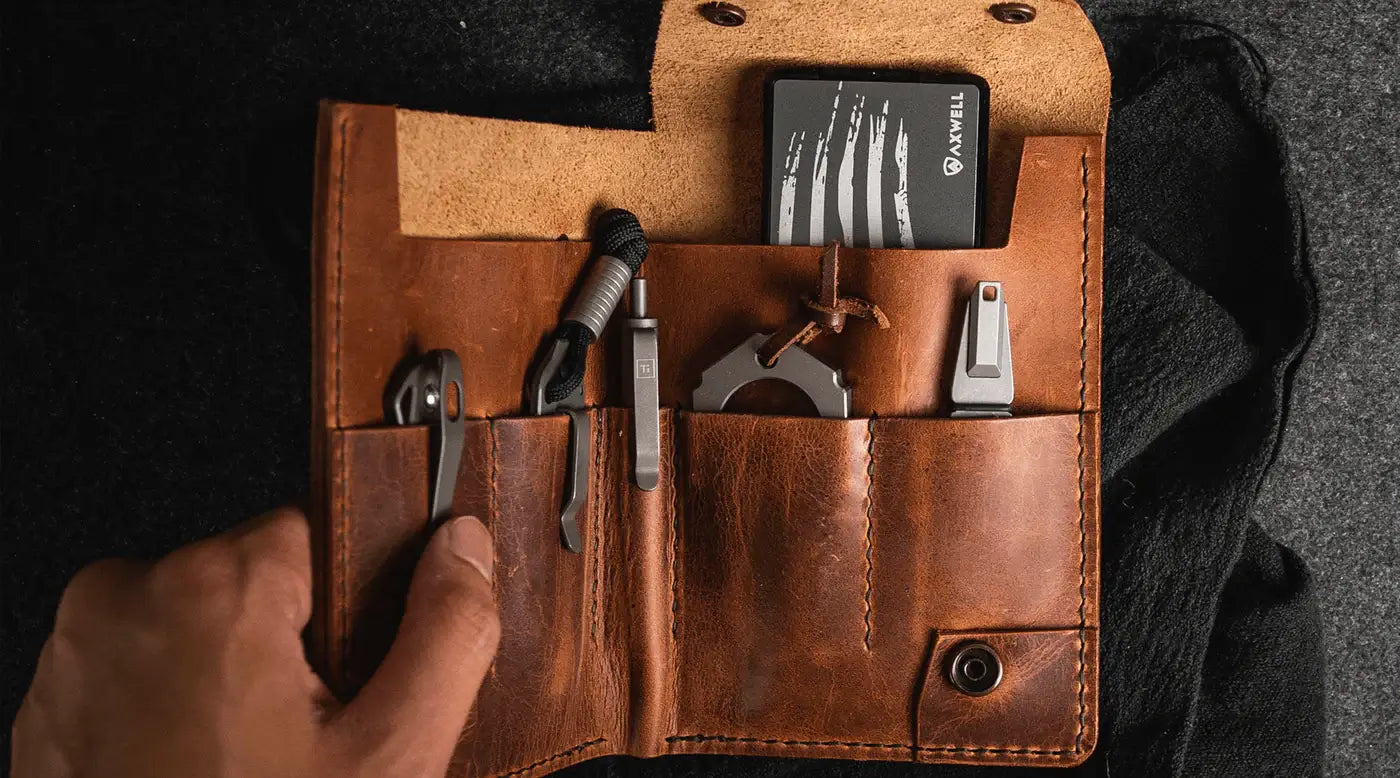Protect Your Identity: Why You Need an RFID Wallet
In today's digital age, safeguarding personal information is more crucial than ever. One of the emerging threats is RFID-enabled identity theft, where thieves can steal your sensitive data using radio-frequency technology. The solution? A secure RFID wallet designed to block these harmful signals and keep your personal information safe.
In this guide, we’ll explore what RFID wallets are, how RFID technology works, and why investing in an RFID-blocking wallet is essential for protecting your personal data. Whether you're concerned about credit card fraud or just want to stay ahead of cyber thieves, this post will provide you with all the information you need to make an informed choice.
What Is RFID and How Does It Work?
Understanding RFID Technology
RFID stands for "radio-frequency identification." This technology uses electromagnetic fields to automatically identify and track tags attached to objects like credit cards, passports, and even employee badges.
Unlike traditional barcode readers, which require close proximity, RFID readers can capture data wirelessly from several feet away—sometimes up to 20 feet for high-frequency devices. This makes RFID highly versatile, allowing for contactless payments and faster transactions. However, it also opens the door for cybercriminals to access your information without direct contact.
Components of an RFID System
Every RFID system consists of three main components:
- RFID Tags: These tags, embedded in credit cards or passports, store information and communicate with readers.
- RFID Readers: These devices use radio waves to capture data from the tags.
- Antennas: Antennas facilitate communication between the tags and the readers.
Different frequency ranges are used in RFID technology, including:
- Low Frequency (LF): 125 kHz
- High Frequency (HF): 13.56 MHz (used in most credit cards)
- Ultra-High Frequency (UHF): 433 MHz, 860-960 MHz
Why You Need an RFID-Blocking Wallet
The Rise of RFID Identity Theft
With the ease of RFID technology, cybercriminals have found new ways to steal personal information. Using RFID skimmers, thieves can steal data from your RFID-enabled credit cards, debit cards, and passports without even touching your belongings. All they need is proximity, and your sensitive data is at risk.
This is where an RFID-blocking wallet becomes indispensable. These wallets are designed with special materials that block RFID signals, preventing thieves from accessing your information.
How RFID Wallets Protect Your Data
How Does an RFID Wallet Work?
An RFID wallet contains a special lining made from materials such as metal composites that block radio waves. When your cards are stored inside the wallet, the RFID-blocking material prevents skimmers from reading your information, ensuring that your personal data remains secure.
Axwell’s RFID Wallets: The Ultimate Protection
At Axwell, we specialize in creating RFID-blocking wallets that not only protect your information but also provide style and durability. Our Axwell Wallet features military-grade RFID Secure Technology, which blocks signals from 10 MHz to 3000 MHz, including the common 13.56 MHz frequency used in most credit cards.
Explore our RFID wallet collection to find a wallet that combines protection with modern style.
Benefits of Using an RFID Wallet
Why Invest in an RFID Wallet?
Using an RFID wallet offers several advantages:
- Protection Against Theft: Block RFID skimming and safeguard your personal data.
- Durability: RFID-blocking wallets are made from high-quality materials that ensure long-lasting protection.
- Style and Functionality: At Axwell, we offer RFID wallets that are sleek, stylish, and functional. Discover our range of slim wallets and metal wallets that cater to both fashion and security.
Choosing the Right RFID Wallet
What to Look For in an RFID Wallet
When shopping for an RFID-blocking wallet, consider the following:
- Material: Look for wallets made with high-quality RFID-blocking materials like metal or carbon fiber.
- Design: Choose a wallet that fits your lifestyle, whether it's a front pocket wallet, minimalist wallet, or money clip wallet.
- Brand: Opt for reputable brands like Axwell, which offer RFID wallets that combine protection with style.
How to Know If You Need an RFID Wallet
Not sure if you need an RFID wallet? If you use RFID-enabled credit cards, debit cards, or passports, then an RFID-blocking wallet is a must-have. It’s a small investment for peace of mind and can prevent significant financial loss.
Final Thoughts on RFID Wallets
In a world where technology is rapidly advancing, it’s important to stay one step ahead of cybercriminals. Investing in an RFID-blocking wallet is an essential part of protecting your personal information from identity theft.
At Axwell, we offer a wide selection of RFID wallets that provide superior protection without compromising on style. Visit our RFID wallet collection today to find the perfect wallet that suits your needs and keeps your personal data secure.
Stay informed, stay protected, and explore the future of secure wallets with Axwell.









